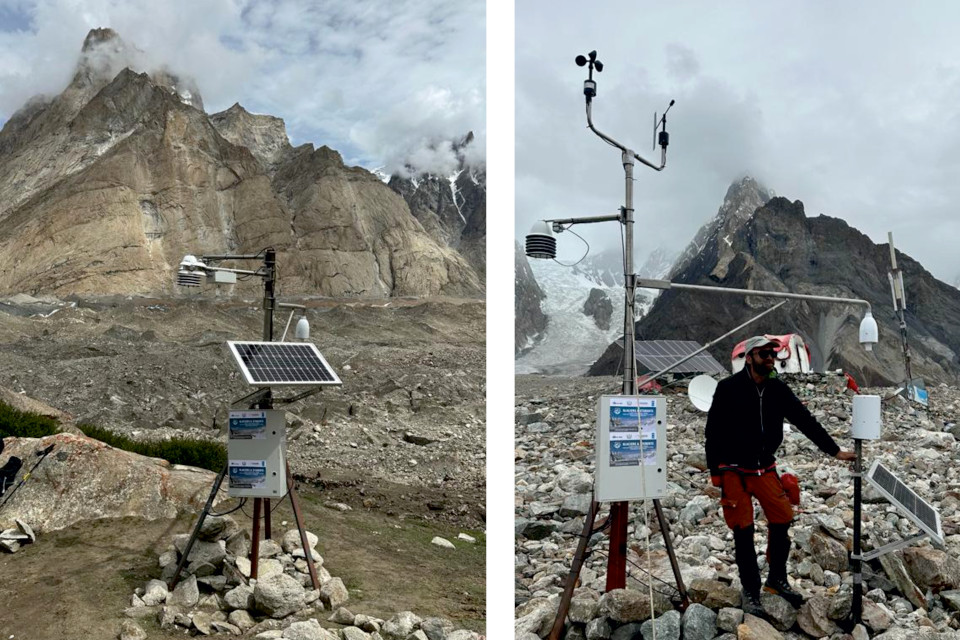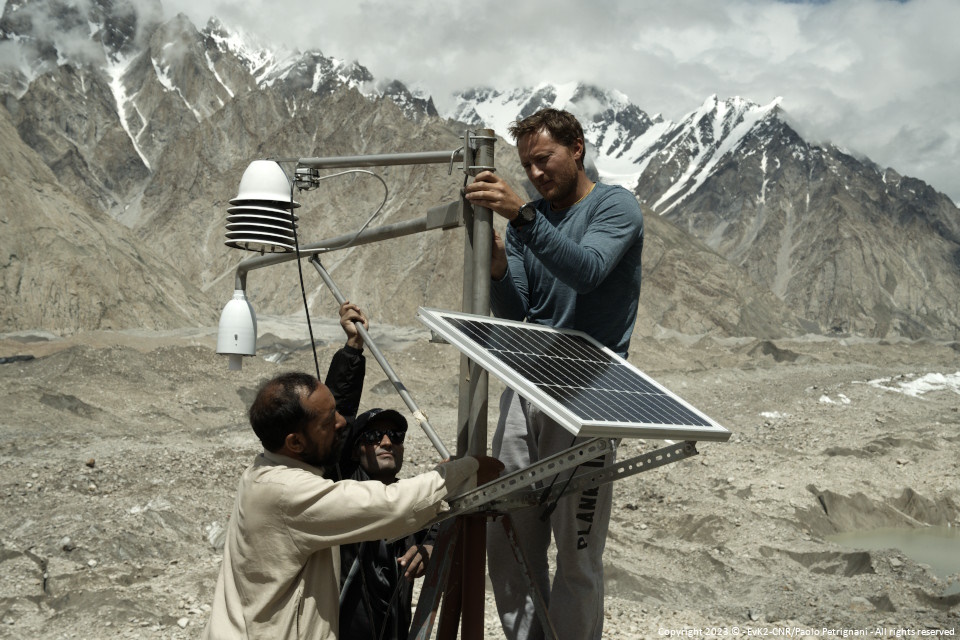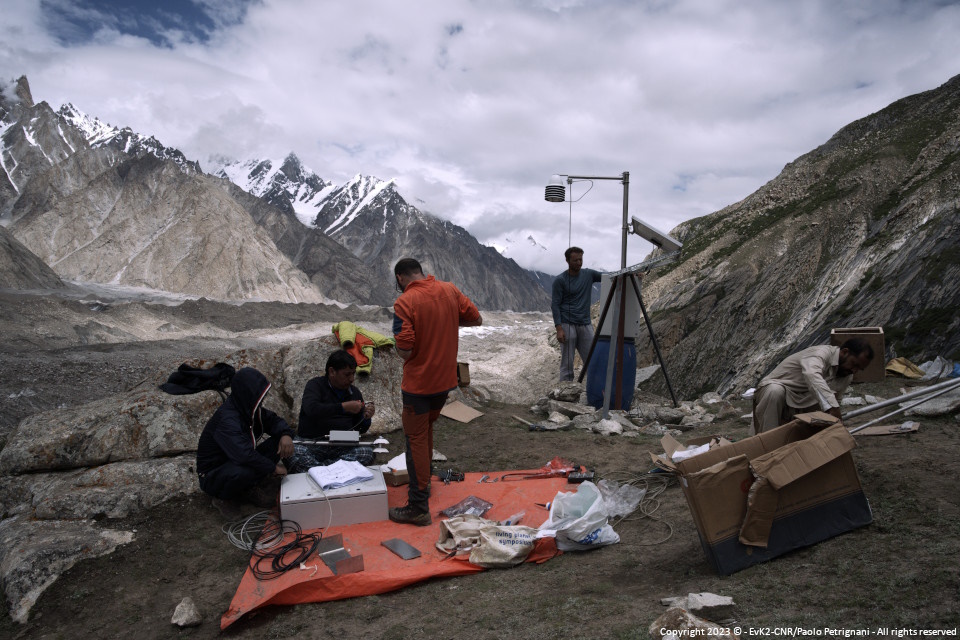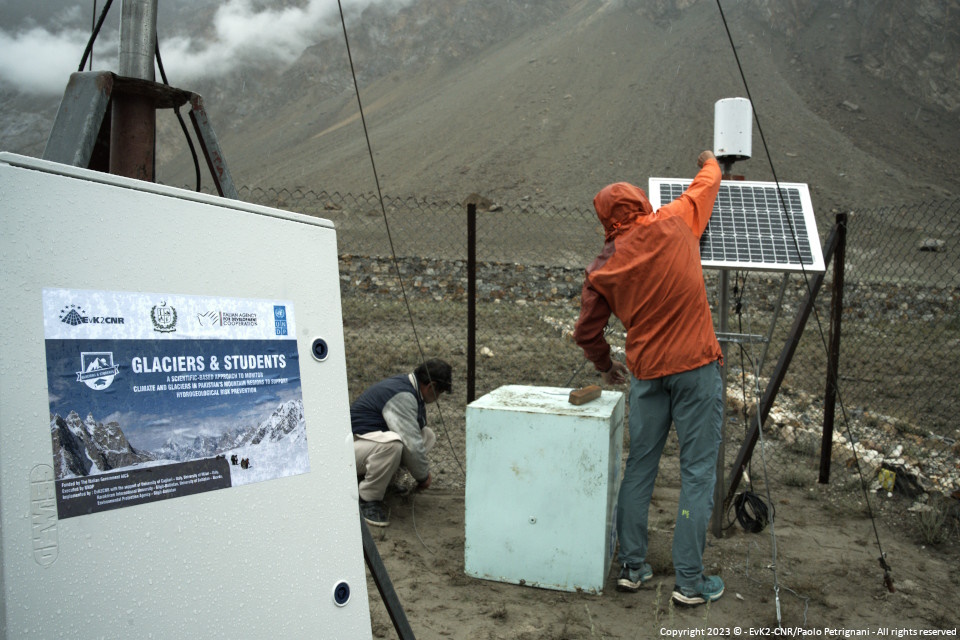The project “Glaciers & Students” takes shape: CAE’s stations installed in Gilgit-Baltistan in Pakistan
October 2023
The "Glaciers and Students" project acknowledges the urgency of addressing the impacts of climate change in the Region of Gilgit-Baltistan. Through capacity building initiatives, the project aims to equip universities and local government institutes with the necessary skills and knowledge to address the environmental and water resource implications of glacier retreat.
CAE, present in Pakistan since 2014, was involved in the project by Ev-K2-CNR that has been carrying out scientific and technological research projects at high altitudes for more than 30 years, and it is distinguished by the specificity and excellence of the results achieved in the international scientific investigation context. We talked here about CAE's new experience on K2 to upgrade 3 weather stations in Gilgit-Baltistan, a Region with unique characteristics that need constant monitoring due to the climatic emergency.
As climate change accelerates, the changes in glaciers intensify, leading to the formation of glacial lakes and an increased risk of glacial lake outburst floods (GLOFs). These events can have devastating consequences for communities and infrastructure downstream. Therefore, building expertise in glaciology, remote sensing, and mapping is vital to effectively monitor and assess glacier changes, identify potential hazards, and develop appropriate mitigation strategies. By investing in capacity building and knowledge development, Gilgit Baltistan can strengthen its disaster preparedness and improve water resource management. Empowering local stakeholders with the necessary skills to navigate the challenges posed by climate change will contribute to sustainable development in the region. Through enhanced expertise in geomatics, weather stations, glaciological field activities, and avalanche risk assessment, the region will be better equipped to address the impacts of climate change on glaciers and water resources.
The project, also thanks to CAE technology, takes shape through the installation of the three meteorological stations. This will enrich the analysis of students and researchersby providing real-time data.
The main objective is to delineate the new inventory of all the glaciers of Pakistan that represent the third tower of water of the world, the biggest one excluding the poles. Totally there are 7200 glaciers in Pakistan in the three ranges of Himalaya, Karakoram and Hindukush. The analysis of the satellite images of 2021 gives a precise delineation of the surface of the glaciers and give the possibility to verify the trend that happened in the last 30 years comparing the previous inventory with the new one.
The Karakorum Anomaly, results of the studies conducted in 2011, show that the glaciers in the region are more stable compare the other parts of the world: nowadays is this result still true or the Pakistani glaciers are going to retreat as the others? From the first results we can suppose that there is a big difference between the western part of the mountain ranges and the ester one: in Hindukush and the right orographic of the Hunza River are melting much faster. The case of Shisper is a prove of this trend but also what is going on in Chitral in these days confirm this hypothesis.
The really unique approach of this project is the students involvement: students of the Italian Universities and Gilgit and Skardu Universities are working together sharing their steps and increasing their capacity building on glaciology studies: at the end of the project this awareness will remain and will create the basis for the development of a glaciology knowledge that has to be strengthened because in the situation of new era of climate change the study on the main resource of water of the Country has to become more important for the students and local institutions.
Back to the news index




